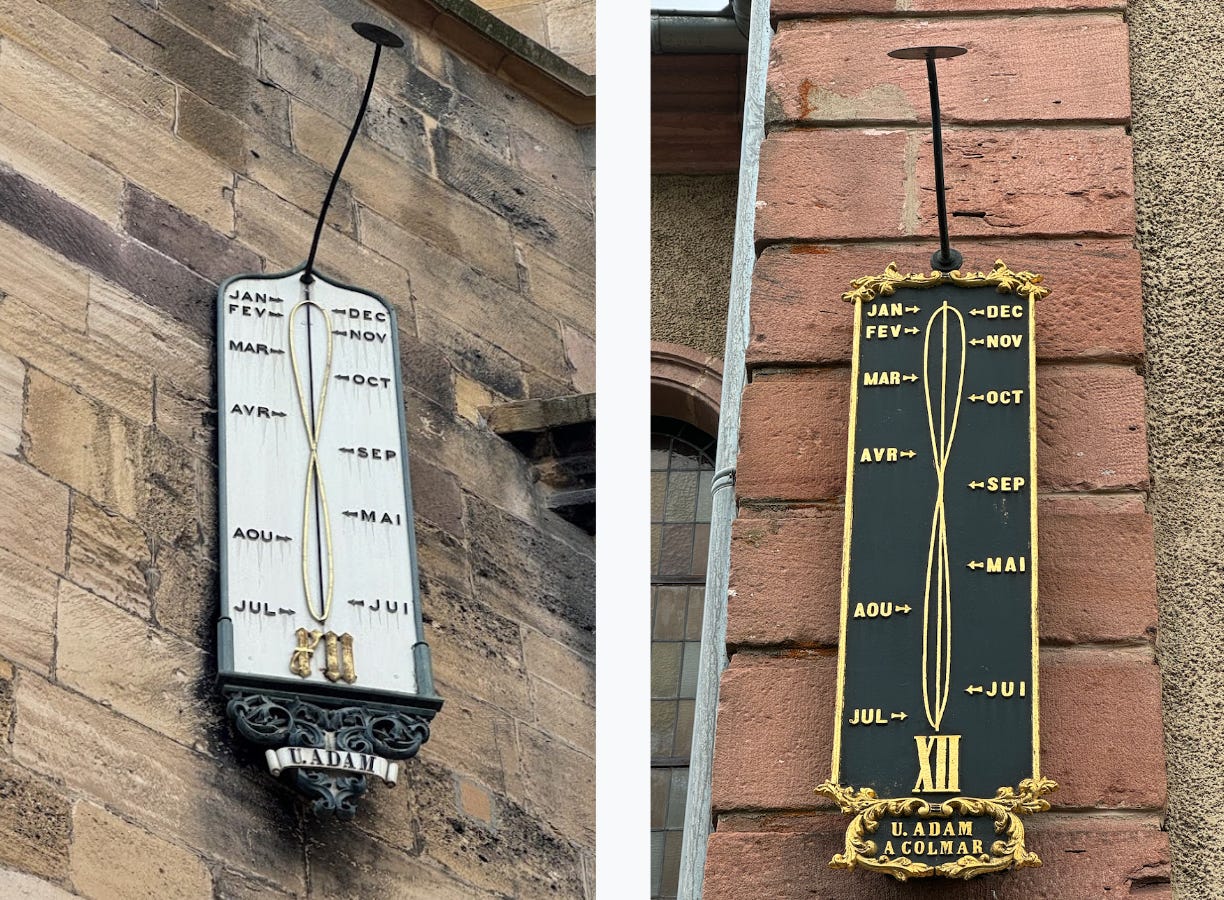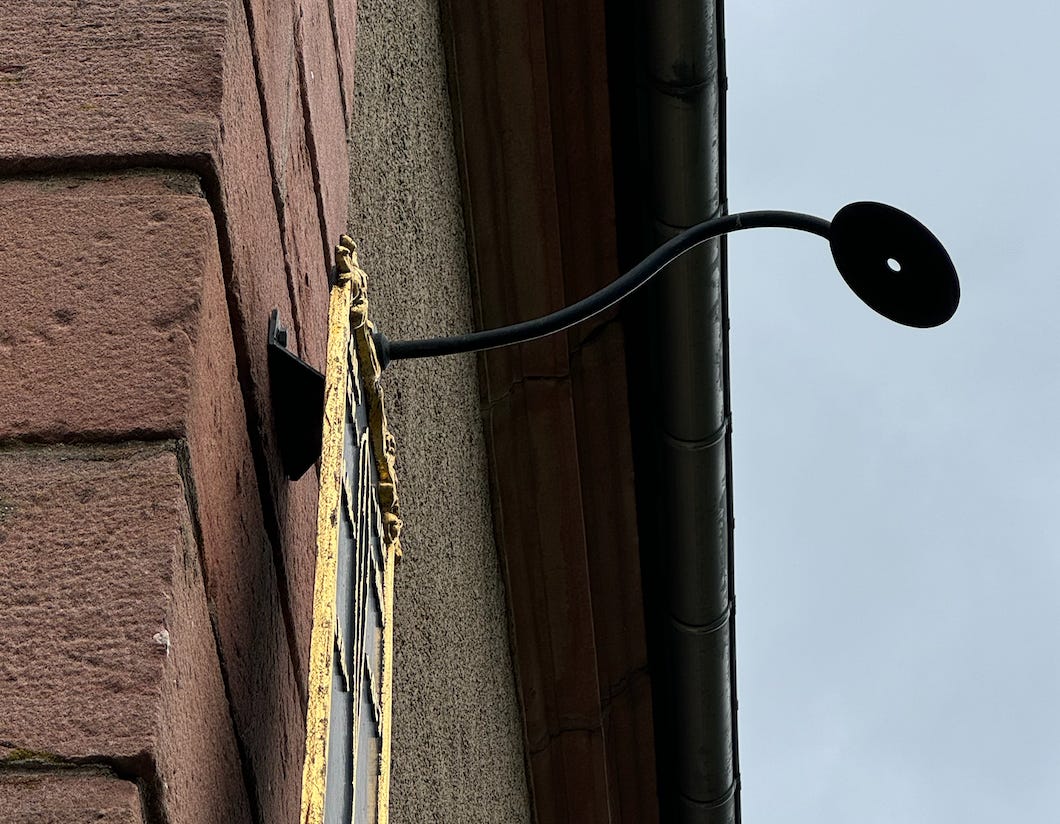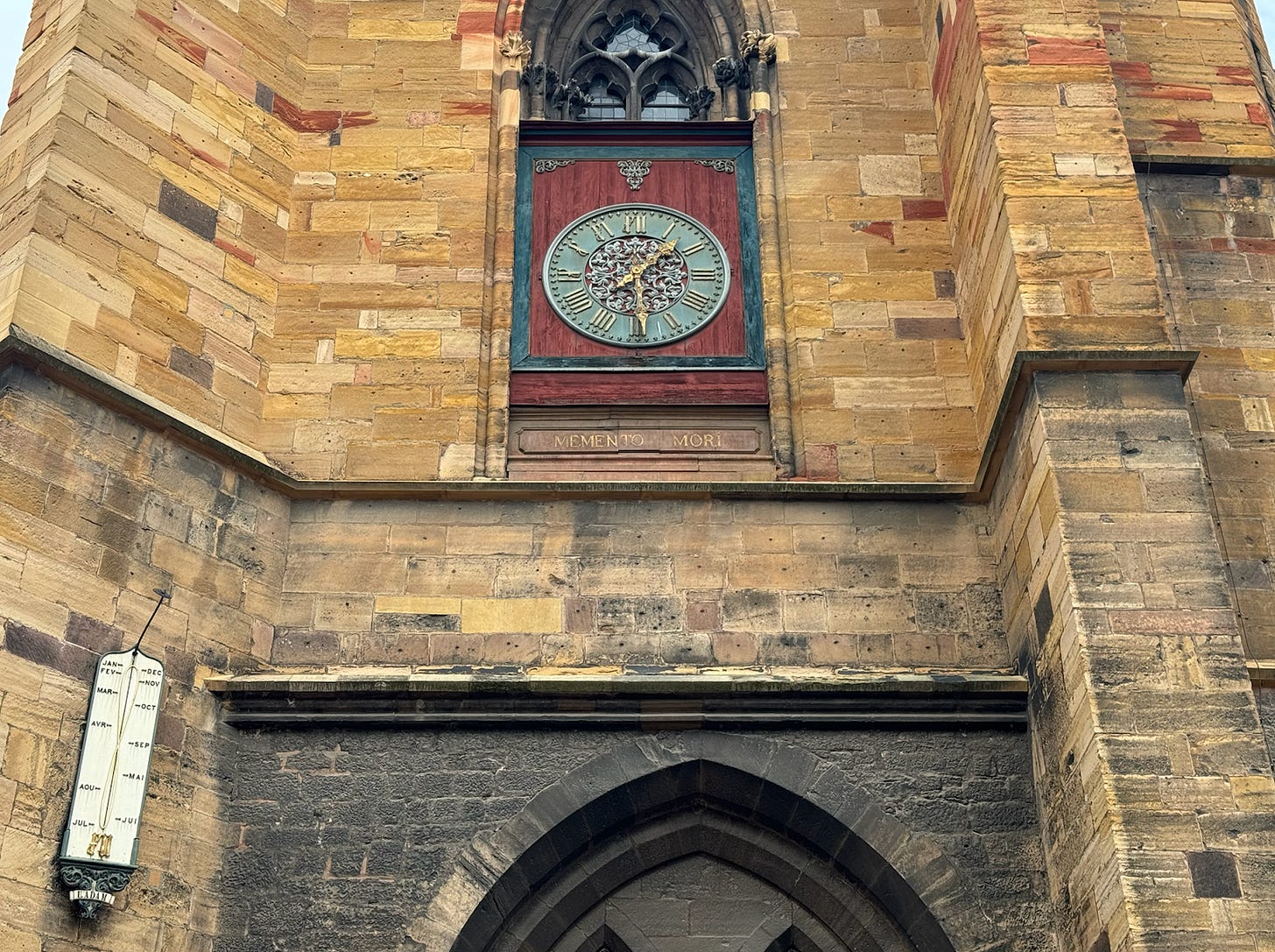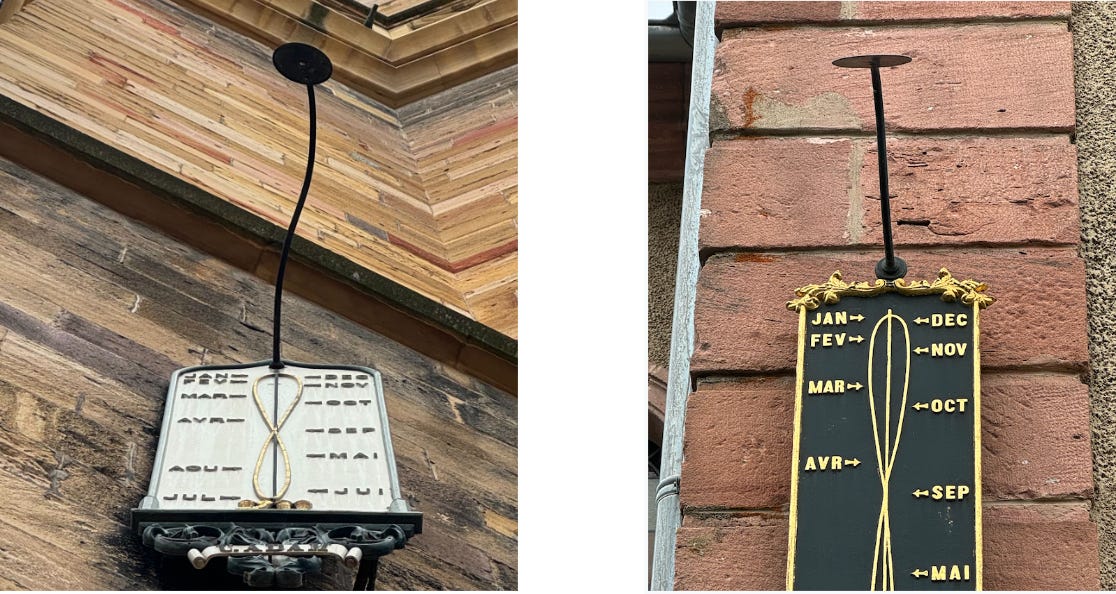Mark Slavonia | July 9, 2024
The Noon Sundial Edition
On calibration, and mechanical clocks, and slightly showing off.
Mark Slavonia (MJS) is an investor, a pilot, and an avid cyclist. He’s written for us about tall trees, radio beacons, rowing machines, traveler’s checks, and more. He posts other things that are interesting on his website.
Mark here. I love a good sundial. While biking around the Alsace region of France this week, I spotted several sundials that shared a curious and interesting design. Here are two examples.
Why is this interesting?
These are called “noon marks” or “noon sundials,” and once had a specific application: they were used to calibrate the mechanical clock with which they shared a building.
A noon mark did this by marking time just once a day, at local solar noon. (Note the Roman numeral “XII” at the base of these dials, indicating 12:00.)
A small hole above the dial creates an aperture gnomon for the sundial. You can see it here:
At noon each sunny day, the spot of light passing through the hole would cross the figure-eight line marked on the sundial at the point indicated as the current month and date. That figure-eight shape is called an analemma, and is a familiar seasonal corrective graph also found on conventional sundials. This enabled the mechanical clock in the church tower to be calibrated from time to time against the solar observation from the noon sundial.
It also proved the clockmaker’s accuracy. Until the imposition of standardized time zones, which threw off local solar noons, passers-by could confirm a clock’s accuracy against the noon sundial, and marvel at the clockmaker’s skill (or perhaps curse his crude and clumsy craftsmanship if it was consistently inaccurate).
The examples I’ve photographed above are both marked “U. Adam”, which stands for “Usine (factory) Adam”, a well-known local clockmaker that passed through several generations. The noon dials were made by the same people who made the clock, and served as advertising for the clockmaker. These dials date from the mid-nineteenth century, just before the telegraph and other technologies (often driven by the needs of the growing railroad industry) made solar calibration of mechanical clocks unnecessary.
If you want to see these noon dials in action today, remember to make some corrections. First, remember to account for Daylight Savings Time in the summer months. Second, the standardization of time zones means that local solar noon, the time that the sun is directly overhead, can vary from east to west across a time zone, in this case Central European Time (CET, or CEST during daylight savings time). The center of CET is 15° east of the Greenwich Meridian, near Prague, while these clocks and dials in Alsace stand at about 7.5° east of the Greenwich Meridian, so solar noon in Alsace occurs a half hour later than indicated by its time zone. Solar noon tomorrow (July 4, 2024) in Colmar, France will occur at 1:29 pm Central Europe Summer Time (CEST).
Take a close look at the noon dial from Colmar (below left). Adam’s elegantly swan-necked pole supporting the aperture gnomon has been bent slightly to the east, to account for Colmar’s position a half-hour west of the center of its time zone, which it joined in 1940. This will work roughly to match CET but will not track the time or seasons as precisely as the original position. The dial on the right will indicate solar noon precisely but will be out of sync with Central European Time.
My attempts to verify the accuracy of these instruments were thwarted by a cloudy day. I’ll just have to trust the good Monsieur Adam and his usine of master clockmakers until I return on a brighter one. (MJS)
—
Thanks for reading,
Noah (NRB) & Colin (CJN) & Mark (MJS)
—
Why is this interesting? is a daily email from Noah Brier & Colin Nagy (and friends!) with editing help from Louis Cheslaw about interesting things. If you’ve enjoyed this edition, please consider forwarding it to a friend. If you’re reading it for the first time, consider subscribing.



